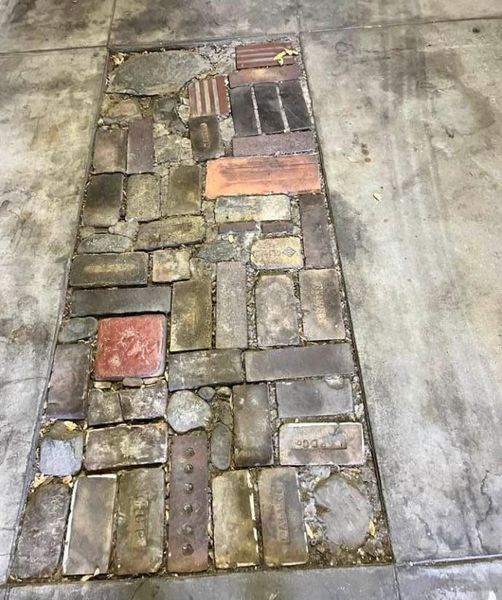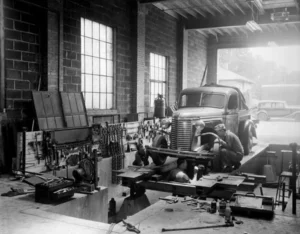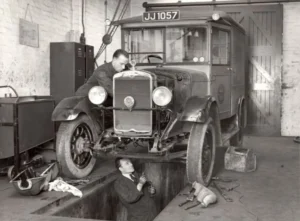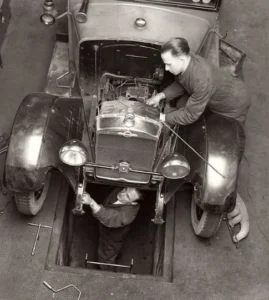
Ah, remember the scent of oil and grease that filled the air in the old garages? For those of us who recall the golden days of car maintenance in the ’60s and ’70s, the image of a mechanic leaning into a service pit, tools in hand, under the belly of a classic car might bring a wave of nostalgia. Back then, before the high-tech lifts and computer diagnostics of today’s auto shops, the service pit was a fundamental part of any serious garage, a symbol of the hands-on, gritty work that defined automotive care.
The service pit was ingeniously simple—a trench dug right into the garage floor, lined with concrete or bricks to provide stability and durability. It was deep enough for a mechanic to stand upright, with the vehicle parked overhead, providing easy, direct access to the car’s underside. This setup was perfect for everything from quick oil changes to more complex repairs like exhaust and transmission work.

Back in those days, the practicality of the service pit made it essential. It was a cost-effective solution that utilized minimal resources while maximizing efficiency—qualities that were particularly valued during the economically turbulent times of the ’70s. For many family-run garages, investing in expensive hydraulic lifts was out of the question; the service pit offered a viable alternative that kept these small businesses running.
The service pit also tells a story of a time when manual skill and physical labor were highly valued in the workforce. The ability to diagnose and fix a mechanical problem with one’s own hands was respected and seen as a badge of honor among peers. It was a time of problem solvers, where a day’s work left you with a sense of accomplishment and greasy hands.

While modern technology has largely replaced the need for service pits in professional settings, the spirit of innovation and self-reliance they embodied continues to inspire. They remind us of a time when ingenuity and adaptability were the keys to success, traits that are still valuable today.
So here’s to the service pits—though they may be less common now, the stories of hard work and creativity they harbor remain a cherished part of automotive history. Let’s keep those stories alive for future generations to appreciate the ingenuity of the past, one car at a time.

Leave a Reply